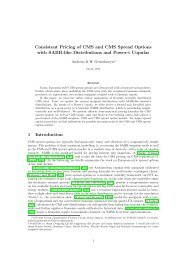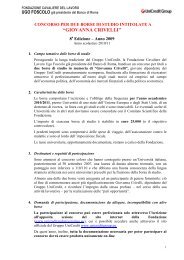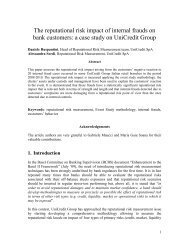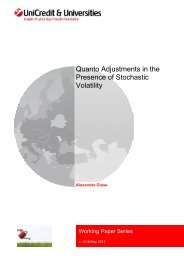Dóra Fazekas Carbon Market Implications for new EU - UniCredit ...
Dóra Fazekas Carbon Market Implications for new EU - UniCredit ...
Dóra Fazekas Carbon Market Implications for new EU - UniCredit ...
You also want an ePaper? Increase the reach of your titles
YUMPU automatically turns print PDFs into web optimized ePapers that Google loves.
!<br />
Verified emissions<br />
Change compared to previous<br />
year<br />
2005 2006 2007 06/05 07/06 07/05<br />
Paper 171,715 159,501 154,318 -7.11% -3.25% -10.13%<br />
Tile and brick 624,324 617,005 619,183 -1.17% 0.35% -0.82%<br />
Glass 275,273 283,544 288,650 3.00% 1.80% 4.86%<br />
Cement 2,436,328 2.484,559 2,581,857 1.98% 3.92% 5.97%<br />
Steel and iron 1,256,901 1.196,376 1,219,350 -4.82% 1.92% -2.99%<br />
Metal ore 320,775 306,649 292,384 -4.40% -4.65% -8.85%<br />
Coking 184,815 299,823 284,249 62.23% -5.19% 53.80%<br />
Oil refining<br />
Energy<br />
1,317,231 1,345,427 1,430,045 2.14% 6.29% 8.56%<br />
production 19,574,280 19,153,024 19,965,462 -2.15% 4.24% 2.00%<br />
All sectors 26,161,642 25,845,908 26,835,498 -1.21% 3.83% 2.58%<br />
Table 22. Changes in emissions at Hungarian sectors during the pilot phase<br />
Source: author’s calculation based on NAP and CITL data (Mt)<br />
Of the 240 registered Hungarian installations, 96 saw an increase in 2006 and 134 saw a decrease;<br />
in 2007, 74 reported an increase and 155 a decrease in emissions – according to Róbert Reiniger of<br />
Deloitte (2008); the remaining installations terminated their operations in 2007. A press release by<br />
Deloitte indicates that the pilot phase did not bring about significant emissions-reduction measures.<br />
Experts claim that the changes of at least 20% are a result of changes to production, the shutting<br />
down and restarting of machines; changes smaller than this amount – primarily in the energy<br />
industry – may be ascribed to meteorological changes (a mild or a harsh winter, <strong>for</strong> instance). This<br />
finding was confirmed by those interviewed <strong>for</strong> this dissertation that claimed, the <strong>EU</strong> scheme did<br />
not provide the necessary motivation <strong>for</strong> change. The insignificant extent of emissions reduction<br />
witnessed in Hungary is probably due to two factors. One of these was the lax allocation practices<br />
of the pilot phase; the other factor is that the price of emissions allowances during the second half<br />
of the trading period plummeted, soon after the Hungarian Registry went online and trading could<br />
commence. The author’s interviews revealed that emissions reduction measures, which were<br />
realized, were in fact not due to the <strong>EU</strong> ETS; all of these measures would have been realized<br />
without the introduction of the scheme, and were not driven by the possibility of trading<br />
allowances.<br />
Most installations achieved their reductions during the <strong>EU</strong> ETS pilot phase through the use of<br />
biomass. Deloitte (2008) reports that switching to the use of sawdust was dominant in the ceramics<br />
industry, and certain solid-fuel-burning power plants switched to the use of biomass – including<br />
plant granulates, tallow, meat flour and wood – to reduce their carbon dioxide emissions. The same<br />
trend was apparent in the cement industry, which began using wastewater silt, paper silt and energy<br />
grass.<br />
154









